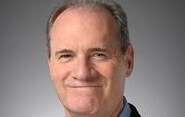Home price appreciation continued to moderate in most markets during the fourth quarter, according to the National Association of Realtors' (NAR) Housing Affordability Index report.
The average price for a single-family home was $196,900 in the fourth quarter, up 10.1% from $178,900 in the fourth quarter of 2012. In the third quarter, the median price increased 12.5% from a year earlier.
According to the report, 119 out of 164 metropolitan statistical areas (MSAs) – or about 73% – experienced home price gains based on closings in the fourth quarter compared with the fourth quarter of 2012. Of those MSAs, 42, or 26%, had double-digit increases, two were unchanged, and 43 recorded lower median prices.
Home prices rose in fewer markets in the fourth quarter compared to the third quarter, when year-over-year increases were recorded in 88% of MSAs. This reflects a slowdown in price appreciation, NAR says.
Lawrence Yun, chief economist for NAR, says that while rising home prices have helped the economy, by giving homeowners more equity that they can draw on, they have also been rising faster than incomes, creating affordability issues, especially for first time home buyers who are more challenged to come up with a 20% down payment.
Yun says part of the problem is that inventories remain low in many areas – which in turn is keeping prices artificially high. At the end of the fourth quarter there were 1.86 million existing homes available for sale, slightly above the fourth quarter of 2012, when 1.83 million homes were on the market. The average supply during the fourth quarter was 4.9 months, compared to 4.8 months in the fourth quarter of 2012. A supply of 6.0 to 6.5 months represents a rough balance between buyers and sellers.
Adding to the problem is the fact that new construction is not keeping pace with demand.
‘New home construction activity needs to increase significantly in the fast appreciating markets to help relieve upward price pressure,’ he says. ‘In 2013, housing starts totaled 924,000, well below the historic average of 1.5 million units that typically are needed.’
Yun says that adding more housing to inventories should ‘help moderate price growth’ and ‘stem erosion in affordability.’
However, even if supplies increase, ‘mortgage interest rates are projected to rise above five percent by the end of the year,’ Yun says, creating yet another hindrance to affordability. According to Freddie Mac, the national commitment rate on a 30-year conventional fixed-rate mortgage averaged 4.30% in the fourth quarter, down from 4.44% in the third quarter.
The average rate reached a record low 3.36% in the fourth quarter of 2012, with records dating back to 1971, the NAR notes.
The five most expensive MSAs in the fourth quarter were the San Jose, Calif., where the median existing single-family price was $775,000; San Francisco, $682,400; Honolulu, $670,800; Anaheim-Santa Ana, Calif., $666,300; and San Diego, where the median price was $476,800.
The five lowest-cost MSAs were Toledo, Ohio, with a median single-family price of $80,500; Rockford, Ill., $81,400; Cumberland, Md., at $89,500; Elmira, N.Y., $99,500; and South Bend, Ind., with a median price of $101,100.
Distressed homes – foreclosures and short sales generally sold at discount – accounted for 14% of fourth quarter sales, down from 24% a year ago, according to NAR.
Steve Brown, president of NAR and co-owner of Irongate Inc., says consumers should keep in mind that all real estate is local.
‘The national figures provide useful background, but it really gets down to supply and demand in a given neighborhood,’ he says. ‘Metropolitan area figures are an excellent gauge of local housing markets, but there can be widely ranging conditions within a metro area. This is why it's best to consult with a Realtor, who has additional resources and can provide much greater detail on specific locations.’
For more, click here.










